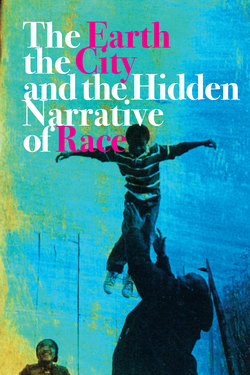Читать книгу The Earth, the City, and the Hidden Narrative of Race - Carl C. Anthony - Страница 9
На сайте Литреса книга снята с продажи.
ОглавлениеForeword
IN 1991, FRESH OUT of law school, I arrived in San Francisco to work with the Lawyers’ Committee for Civil Rights. The police beating of Rodney King had enraged our nation, and I immersed myself in the subsequent movement to end police brutality. I was working to free people from systemic forms of oppression, but I had rarely given deep consideration to the environmental impacts of pollution and climate change on vulnerable communities until I was introduced to the work of Carl Anthony.
Carl had been linking issues of environmental justice to the work of civil rights since the 1980s. His formation of the Urban Habitat Program in 1989 was a critical development for the environmental justice movement internationally. His leadership, locally and nationally, set the stage for so many of us who were seeking integral solutions to the multiple issues facing our communities. The organization Green For All, my book The Green Collar Economy, and so much of my work since drew inspiration from the seminal work of Carl Anthony.
Carl Anthony has always been ahead of the curve—a rare leader who possesses both vision and insight. Throughout his tremendous career, Carl has drawn links between disciplines, communities, cultures, and social movements. He is capable of seeing the trail before it has been cleared. The bridges he built between the environmental and racial justice movements over the past forty years are the very bedrock upon which these movements—now connected—stand today.
The Earth, the City, and the Hidden Narrative of Race offers us a rarely seen atlas of the social movements of our times. It offers a way forward for the changemakers of generations to come. Carl Anthony brings his expertise and love for architecture and urban planning—and his passion for the earth and the grandeur of the cosmos—to the conversation of racial justice and community advocacy and healing. Carl grew up in a redlined section of Philadelphia and watched his city crumble during white flight. These experiences powerfully inform his reflections on the journey of black people in America. Carl’s depiction of his journey to Africa in 1970 to study architecture and culture and to search for answers about his roots is important not only for black Americans, but for all people seeking to grasp the depth and complexity of the realities we face today.
Through his multifaceted expertise, Carl Anthony has influenced many sectors—academia, philanthropy, nonprofit, business, and government. He has generously helped emerging leaders find their own voices and their own greatness. Carl’s life is a model for what it means to be unafraid and to follow the path of one’s own heart regardless of the tide. He set out to study that which has compelled him, and then has strategically uplifted and linked these various subjects through his life’s work.
It is times like these when we need most to draw on the strength and wisdom of our elders. Carl honors the many teachers and leaders who guided his thinking throughout his journey. As people who hope to make things a little bit better for others, it is helpful to remember that we stand upon strong shoulders. Carl Anthony’s book joins the literary canon of titles that illuminate the black American experience. It is also a fierce and compassionate call to action.
Carl Anthony is an unsung modern-day hero—an early adopter and creator of new paradigms. He has walked a path less chosen, and we are all better for it. Carl has written a remarkable book that lets us see into his personal journey and his life’s work and offers us an impressive map of the social movements of our times.
Van Jones, Oakland, California. Spring 2017
